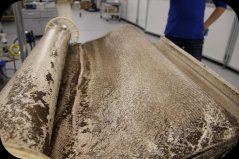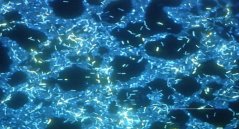Project
Structure and strength of the extracellular polymer matrix of biofilms (MSc Natascha Pfaff)
Background
Membrane filtration is the technology of choice when it comes to water purification. The attachment and growth of bacteria on these membranes results in formation of biofilms: to create a favourable living environment they immobilize themselves in a slimy matrix of extracellular polymeric substances (EPS). This causes biofouling, which is a severe issue in membrane filtration plants. It leads to a decline in the flux, an increase in the pressure that is necessary to run the system, and an overall increase of the costs of the purification process.
The strength of the EPS matrix of the biofilm and its attachment to the membrane surface seem to be key factors determining the success of biofilm removal during cleaning. Because of the complex structure and the high variability in composition of the EPS (depending on the kind of bacteria and the external conditions), there is little data about the correlation between composition, structure and mechanical strength of biofilms. For developing a successful strategy against biofouling understanding these interactions on a molecular basis is essential.


Up: Spiral wound membrane module in a water filtration plant with biofouling. Down: Microscopic image of a biofilm, showing bacteria and extracellular polymeric substances.
Approach
For a basic understanding of the chemical and physical interactions of the EPS matrix, model biofilms with increasing complexity are designed and the influence of structure and composition on the physical properties is investigated. The model films are based on bacterial alginates. Their structure and physical properties (such as stiffness/deformation, adhesion, viscosity) will be analyzed with different techniques, including electron microscopy, atomic force microscopy (AFM) imaging and force spectroscopy, confocal laser scanning microscopy and rheology.
Step by step the complexity of the films will be increased by adding proteins, DNA and abiotic substances such as precipitates or humic compounds. Eventually, actual biofilms will be grown under defined lab conditions. Also the influence of a varying environment (pressure, pH, ionic strength, temperature, nutrients and nutrient depletion) will be investigated.